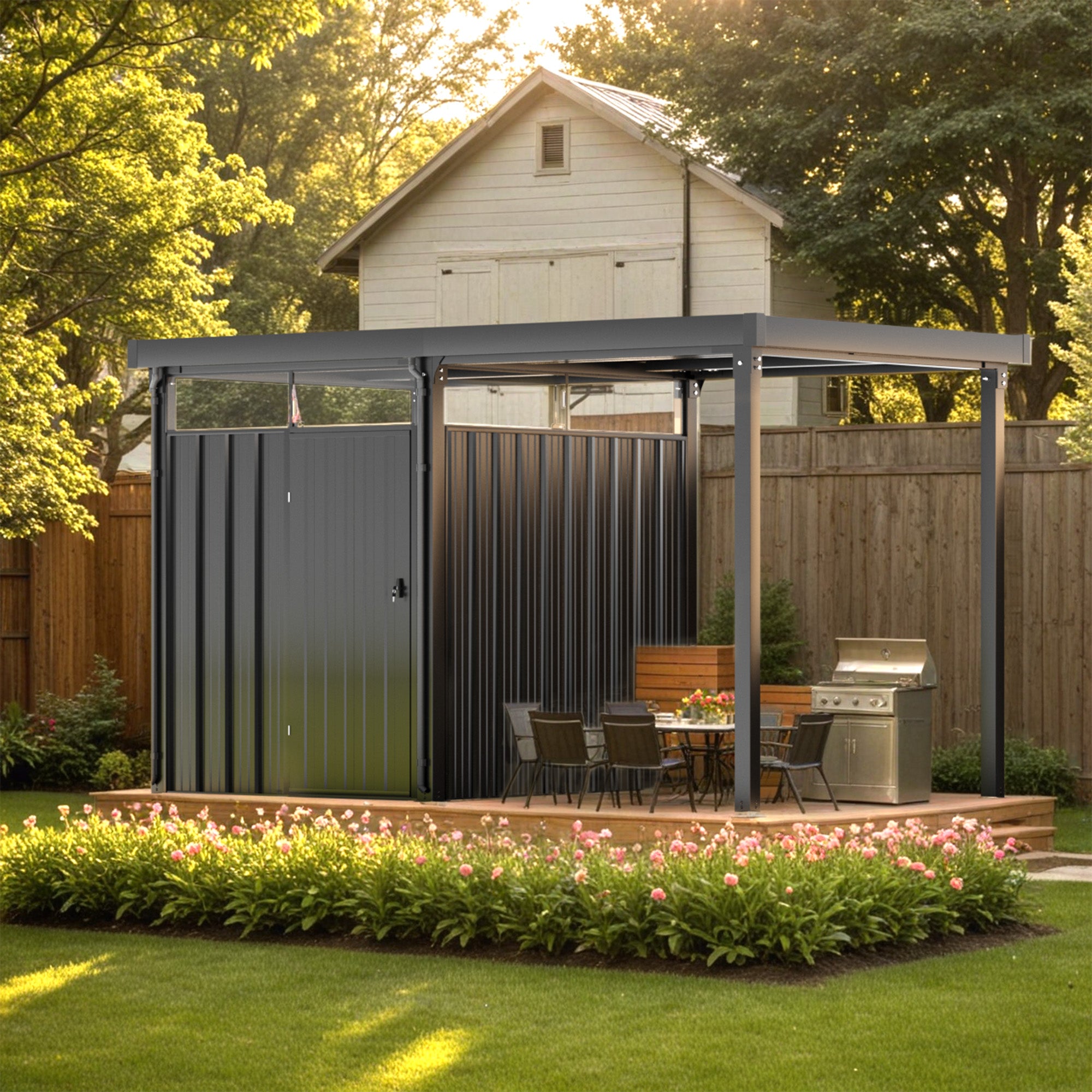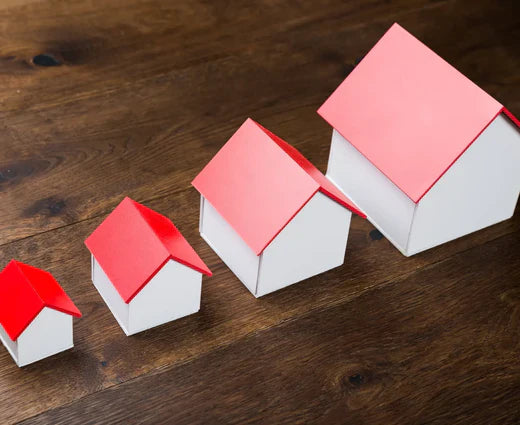Table of Contents:[hide]
Before I built my shed I used to walk into our backyard and it was a mess – tools, garden supplies and seasonal decorations everywhere – chaos at its best.
Then the question hit me: What size shed do I need?
Finding the right size shed for your space can be overwhelming but it doesn't have to be. Whether you're asking yourself how big of a shed do I need for your gardening stuff or looking to create an outdoor escape, today's guide will help you make an informed decision.
Okay, let's get into shed dimensions and turn that backyard chaos into organized heaven!
Your Storage Needs
Remember the time you had to rummage through boxes or piles of tools just to find that one spade the day before you went on holiday, or the Christmas lights the day before the family arrives. It's so frustrating.
That's why getting the right size shed for your needs is key.
Start by looking at everything you want to store. Are you a keen gardener with shovels, rakes and plant pots? A hobbyist with a workbench and DIY supplies? Or just need a place to stash bicycles, lawn mowers and other bulky items.
Knowing what you need to store will help you answer that all important question: What size shed do I need?
Once you've assessed your storage needs it's time to visualize how all your items will fit into different shed sizes. Imagine having a dedicated spot for each tool, a place where your lawn mower slides in without a fight for space.
By knowing your storage needs you'll not only feel more relaxed but also get more functionality and space. You'll soon realize the shed isn't just another thing in your backyard; it's a custom solution to your clutter.

Shed Sizes and Uses
So you've decided a shed is in your future and you're asking, what size shed do I need? Let's look at the different sizes and see how they could fit into your life!
Small Sheds (up to 80 sq ft)
These are the Swiss Army knives of sheds. Small sheds may be small, but they pack a big punch.
Imagine this: You're an avid gardener with a few shovels, rakes and plant pots. A small shed gives you just enough room to keep everything organized without eating up your entire backyard.
4x6 or 8x6 are perfect sizes for garden tools, small lawn mowers and bikes. And, they fit in tight spaces and urban gardens.

- Featuring a one-piece panel design and plug-in structure, it's remarkably easy to assemble
- With well-designed vents to ensure air circulation, it is moisture and mildew resistant.
- The sloped roof design cleverly incorporates easy drainage
Medium Sheds (80-120 sq ft)
Now, if you have a bit more to store. You need more than a nook—you need real space.
Medium sheds are your answer.
Imagine a decent sized workshop where you can get into DIY projects without feeling squished.
With sheds like the 8x10 or 10x10 you have room for bigger lawn equipment and outdoor furniture.
This size is perfect for those who need a multi-functional space—one that's storage and a mini workstation, all balanced.

Large Sheds (120+ sq ft)
For those of you with big plans or more storage needs, large sheds are the way to go. These sheds aren't just an add on; they're an extension of your home.
Imagine having a big workshop where your imagination can run wild or even a dedicated space to store a vehicle.
These big sheds—like the 10x12 or 16x12—have room for multiple uses. Store your big items, set up a workbench or even a hobby room.
You'll find a large shed can be a total game changer and turn your backyard into a multi-functional, efficient extension of your home.
Measuring Your Space
So you've asked yourself, what size shed do I need and decided your dream option is within reach. Now it's time to measure your space, so you get that perfect fit.
Remember we're not just putting a shed; we're enhancing your backyard's functionality and beauty.
Here are some helpful tips to guide you through:
- Grab Your Measuring Tape: You have your eye on that perfect spot. Start by measuring the length and width of the area where you want your shed.
- Think About Access Points: How will you move around the shed? An easy access path can save you headaches down the line. Can a wheelbarrow fit through? Consider it!
- Account for Roof Overhangs: The roof will extend beyond the walls of the shed. Make sure to include this in your measurements so you don't get surprised.
- Foundation Requirements: Although our sheds have a floor base, a solid foundation can make or break your shed's longevity. Factor in the space needed for a concrete slab or wooden base
- Future Proof It: Think about future needs. Could you possibly need to add more space, electricity or extend pathways later? If you're not sure, we'll go over this and more further on.
Remember measuring isn't just about numbers—it's about setting the stage for a functional and fun space.
Zoning Laws and Building Codes
Once you've found the perfect spot and measured twice, it's time to consider zoning laws and building codes—two often overlooked but important parts of your shed journey. With a little planning you can avoid any hiccups and have a smooth ride.
- Check Local Regulations: Imagine this—you've built your dream shed and then find out it's not zoned. Ouch! To avoid this scenario, always check your city's local regulations before you do anything else. Your local zoning office or municipality website is a treasure trove of information.
- Permits for Different Shed Sizes: You might think a small shed will fly under the radar but be careful! Depending on your area even small sheds might require a permit. Larger sheds definitely will. Grab your coffee, sit down and fill out that paperwork—it's worth the peace of mind.
- Setback Requirements from Property Lines: Picture this—your shed perfectly placed and then you find out it's encroaching on your neighbor's space. Ouch! By ensuring your shed respects property boundary rules (usually called setbacks) you can keep the peace in your neighborhood. Most areas require a minimum distance from property lines so measure carefully!
By doing a little homework on these zoning laws and building codes you're setting yourself up for a stress-free shed project. Think of it as an investment in your future happiness. Now you can get to the fun part—bringing your ultimate backyard shed to life.
Future Proofing Your Shed Size
Let's set the scene. You started by asking what size shed do I need, you've planned for storing garden tools, a few bikes, maybe even a workshop corner and it's going in next week. But wait—what about next year when you get that riding lawn mower? Or five years down the line when the kids trade tricycles for mountain bikes?
Future proofing your shed size could save a very uncomfortable conversation with your partner, and it's not as hard as you think.
Allowing for Expansion or Changing Needs
Allowing for expansion is key and many miss it. Your garden grows, your hobbies change and suddenly your beloved shed feels a little cramped.
When planning your shed, think about future storage needs.
Are you a gardening enthusiast? Will you need extra space for pots, soil or maybe even a potting bench as your green thumb grows? Or will your family's collection of tools, toys and outdoor gear expand?
Planning for extra square footage will save you from overcrowding in the future.
Modular and Expandable Shed Options
Now let's get into the details. What if I told you your shed could grow with you? Enter modular and expandable shed options.
These clever designs allow you to add on modules or sections as your needs change. It's like having a building set at your disposal!
Start with a base unit and add on extra storage or workspace sections as needed. This way your shed can adapt to new storage needs without having to get a whole new shed.
Resale Value
Think about life's big moves. As time goes on you might decide to move.
Here's a secret: a well sized, well-planned shed will add value to your property. Buyers will love a shed that's versatile and spacious and ready to go for their needs.
When future proofing your shed you're not just planning for your changing needs but also creating a value-added feature for the next person who owns your home.
FAQ
Q1: What's a standard shed size?
A standard shed size can vary but the shed size that will fit in most yards and has room for your tools is the 8x10 foot space. It's a great size as it can fit your lawnmower in one corner, a row of garden tools along the walls and still have room for that potting bench you've been dreaming of.
Q2: What's a good size shed for a backyard?
Our most popular size is the 10x12 foot shed. In your backyard it's your own personal haven, where the smell of freshly cut wood meets the earthy smell of potting soil. Big enough to house your gardening tools, lawn gear and maybe even a cozy corner for weekend DIY projects, this size is practical and spacious.
Q3: What's a 200 square foot shed?
A 200 square foot shed is around 10x20 feet. Whether you see it as a workshop filled with your latest DIY projects or a perfectly organized storage space for your seasonal gear, this size is spacious and functional. It's like having an extra room outside, full of possibilities and ready to become whatever you need.
Q4: What's the most popular shed size?
The 10x12 foot shed is the clear winner among homeowners. This size is just right, not too big for your backyard and not too small, it's the most popular choice for many.
Q5: What can a 10x12 hold?
A 10x12 shed can hold a lot more than you think. There's room for shelves full of paint cans, a workbench for your weekend woodworking and still a cozy nook for a comfortable chair to plan your next project. Essentially a 10x12 shed is not just a storage solution, it's an outdoor space where you can make whatever you need.
Conclusion
In the end it's all about making your backyard more functional and beautiful. Whether it's the 10x12 or a 200 square foot shed, your shed is more than just a storage solution – it's a reflection of you and your creativity.
Have you found your perfect shed size yet? Share with us your own shed stories and tips – we'd love to hear how your space is going!
New to all this? Check out our shed size buying guide and other tools to help you get started. Or contact a shed expert for a custom solution for you.
So go find your shed and get started!
Diana Mason
Hi there! I’m Diana Mason, the chief editor of Patiowell brand. With over 15 years of diving deep into the world of outdoor furniture, I’ve developed a keen eye for what makes outdoor spaces truly special. I love sharing tips and inspiration to help you create your perfect backyard retreat. Our blog is a reflection of my passion and expertise, featuring only the best pieces that I personally vouch for. Thanks for stopping by—I can't wait to help you transform your outdoor living space!







Leave a comment
All comments are moderated before being published.
This site is protected by hCaptcha and the hCaptcha Privacy Policy and Terms of Service apply.